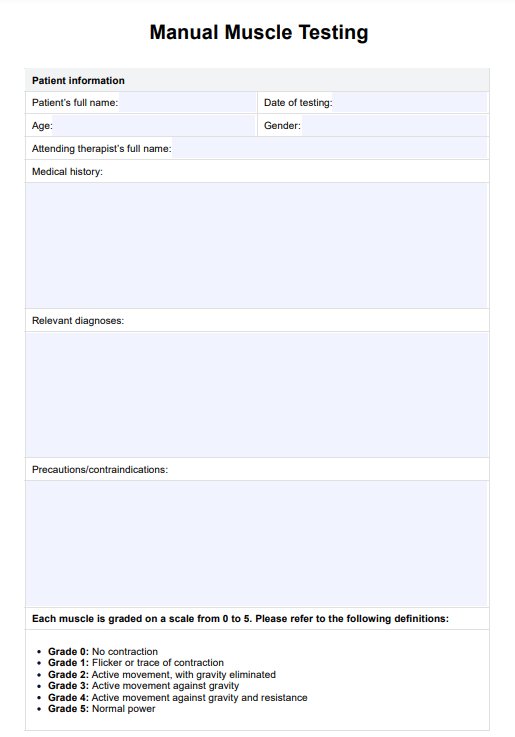Manual Muscle Testing evaluates muscle strength on a standardized scale from 0 to 5. A grade of 0 represents no muscle contraction, while 5 represents normal muscle strength. Moderate resistance, often attributed to a grade of 3 or 4, signifies that the patient can move against gravity and some resistance provided by the examiner. Maximum resistance corresponds to a grade of 5, indicating that the muscle can withstand full resistance without succumbing to fatigue.

Manual Muscle Testing
Improve patient assessment skills with our Manual Muscle Testing template. Download for free and easily record and interpret muscle strength results.
Manual Muscle Testing Template
Commonly asked questions
Functional tests in manual strength testing assess the performance of muscles during specific movements. These tests help determine the muscles' ability to perform tasks necessary for daily living activities and identify areas of weakness.
Manual muscle strength testing for the upper extremities typically involves assessing muscles such as the elbow flexors, while testing for the lower extremities often includes muscles like the knee extensors.
EHR and practice management software
Get started for free
*No credit card required
Free
$0/usd
Unlimited clients
Telehealth
1GB of storage
Client portal text
Automated billing and online payments











